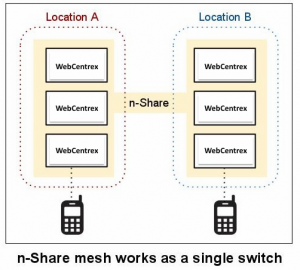 TeleData Link offers carrier class contact and call center service to any size business. Like all of the platforms in the TeleData Link ecosystem, the Contact Center as a Service (CCaaS) solution has been developed to deliver the highest quality experience to users without the need for significant investment.
TeleData Link offers carrier class contact and call center service to any size business. Like all of the platforms in the TeleData Link ecosystem, the Contact Center as a Service (CCaaS) solution has been developed to deliver the highest quality experience to users without the need for significant investment.
CCaaS is an all-in-one virtual contact center suite that includes ACD with Call Queuing, self-service via Interactive Voice Response (IVR), predictive outbound dialing, recording, administrative tools, and extensive integration capabilities.
TeleData Link CCaS is a proven platform that has been deployed for highly reliable contact center services.
A few reasons why TeleData Link CCaaS is an ideal solution for your business include:
- True multi-tenant architecture, sharing of resources over all tenants in the platform providing economies of scale and optimizing utilization of resources
- Operational efficiencies in single platform to supply and manage services to all tenants, with self-administration capabilities for individual tenants
- Distributed resilient architecture providing global scalability and high reliability to meet requirements for multi-node deployments
- Open interfaces and customization options on system wide or per tenant basis to provide tight integration options to allow for individual needs of different tenants
- Choice of agent deployment options with soft clients, IP phones or using traditional phones
- Flexibile and intelligent routing and handling of calls, ranging from simple skills based routing to complex interactive routing algorithms for larger tenants
- Integrated self-service IVR capabilities
- Integrated voice recording
- Strong predictive and preview dialer options for outbound campaigns
- Powerful real time monitoring and analytic reporting tools
When it comes to features, TeleData Link Web Centrex shines.
User Features
| Group Features
| System Features
|

The TeleData Link platform uses always-available n-Share clusters co-located in geographically diverse data centers.
Most high-availability or n+1 redundancy schemes rely on a primary and failover node. In contrast, the n-Share system is Always Available. That means that we provide identical service across multiple locations in real-time. With seamless and transparent failover between nodes, service disruptions are avoided because customer connections are automatically transferred to any nodes available.
So, a voicemail can be left on a Dallas feature server, and retrieved on the New York server immediately, even if the Dallas server is no longer available. It also means that feature options (such as call-forwarding or other * codes) take effect across all servers immediately.
As network traffic grows, TeleData Link adds capacity by deploying additional n-Share nodes. Newly added nodes are added to the n-Share mesh and automatically become available to share call processing tasks across all nodes dynamically and with zero downtime. This means that we can expand to accommodate growth with zero impact on the availability of services to end users.
Where other high-availability schemes require the use of active and standby servers (with the standby servers left idle in readiness for a problem) n-Share creates efficiencies by dynamically distributing load across all available servers. This means that load can be dynamically shared across all connected nodes based on geographic distance from the user. Especially in cases where media-anchoring is required, this optimizes quality of service by ensuring voice and video payload will take the shortest path between the sender and receiver.
Mobile workers are now using SIP mobility clients (such as the PBX Fone mobile client) running over 3G and 4G wireless networks, where network conditions are often unpredictable. As a result, the ability to maximize quality of service in a scalable and reliable way is becoming more important than ever. On that front, TeleData Link has you covered.
WANT TO LEARN MORE?
We would be happy to schedule a demo to help you learn about TeleData Link.